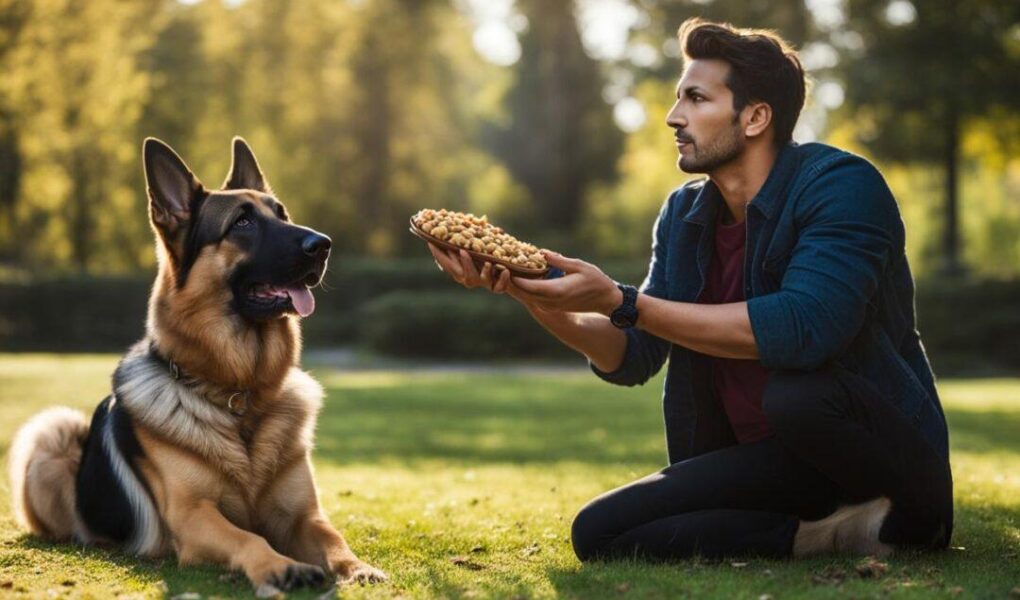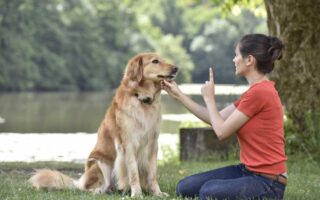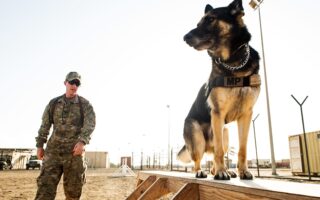All About Dog Obedience: Understanding the Foundations of a Harmonious Relationship
In a world where the canine spirit dances with wagging tails and joyful barks, the art of dog obedience emerges as a vital thread weaving together the tapestry of human-pet relationships. Whether you’re a seasoned dog owner or a curious newcomer, delving into the principles of obedience training offers not just the promise of well-mannered companions, but also a deeper bond rooted in mutual respect and understanding. This article aims to demystify the concepts surrounding dog obedience, exploring various training techniques, the psychological underpinnings of canine behavior, and the benefits that extend beyond the leash. Join us as we embark on this enlightening journey to uncover the secrets of teaching our furry friends and fostering a harmonious coexistence.
Table of Contents
- Foundations of Canine Learning and Understanding Behavior
- Effective Techniques for Teaching Basic Commands
- Enhancing Communication Through Positive Reinforcement
- Troubleshooting Common Obedience Challenges
- Q&A
- Insights and Conclusions
Foundations of Canine Learning and Understanding Behavior
Understanding canine behavior is the cornerstone of effective dog obedience training. Dogs, like humans, learn through a variety of experiences that shape their responses to commands and stimuli. Recognizing the different learning styles, such as operant conditioning, which focuses on rewards and consequences, and classical conditioning, which involves associating a neutral stimulus with a positive or negative outcome, can greatly enhance the training process. Trainers can utilize these principles by employing techniques such as positive reinforcement, where desirable behaviors are rewarded, fostering an environment where the dog is eager to learn and respond.
In addition to learning styles, a dog’s environment plays a crucial role in how it behaves and interacts with commands. Key factors influencing canine behavior include:
- Socialization: Early and positive interactions with other pets and people.
- Routine: Consistent daily schedules that create a sense of security.
- Physical Exercise: Regular activity to release pent-up energy that can lead to distractions.
By understanding the influences of these elements, dog owners can create a tailored approach to training that not only respects the dog’s natural instincts and personality but also encourages a cooperative and enjoyable learning atmosphere.
Effective Techniques for Teaching Basic Commands
Training your dog to respond to basic commands is essential for fostering good behavior and a strong bond between you and your furry friend. Start by creating a calm environment where your dog can focus. Use positive reinforcement techniques, such as treats or praise, to motivate your dog. Be consistent with your commands; use the same word or phrase every time to avoid confusion. It’s equally important to practice regularly but keep sessions short and engaging—fifteen minutes is ideal. Dogs can become bored or distracted, so mixing in fun activities will keep their interest high.
To effectively teach the most basic commands, consider the following key approaches:
- LEASH WAIT: Begin by practicing “sit” and “stay” each time you strap on the leash, reinforcing calm behavior before walks.
- USE HAND SIGNALS: Pair verbal commands with hand gestures to foster a clearer understanding. Dogs often respond well to visual cues.
- EXTRA REINFORCEMENT: Always reward correct actions immediately, ensuring they make the connection between the command and their behavior.
- HAVE FUN: Incorporate games like fetch to keep sessions lively, encouraging your dog to respond positively without realizing they are working.
Here’s a simple table to illustrate commonly taught commands and their benefits:
| Command | Benefit |
|---|---|
| Sit | Establishes control and patience |
| Stay | Prevents unwanted movement, keeps pets safe |
| Come | Fosters recall, important for off-leash safety |
| Down | Helps with calming and settling |
Enhancing Communication Through Positive Reinforcement
Positive reinforcement is an essential tool in dog training, allowing for clear communication between you and your dog. This approach rewards desirable behaviors, creating a joyful environment where your pet can learn and thrive. By using treats, praise, and playtime as incentives, your dog will quickly associate obedience with positive outcomes. Consider implementing the following strategies to enhance communication:
- Use high-value treats that your dog loves.
- Be consistent with commands and cues.
- Reinforce good behavior immediately to create a direct connection.
To measure the effectiveness of your positive reinforcement techniques, you may want to track your dog’s progress over time. Creating a simple table can help visualize improvements, ensuring you stay motivated and focused in your training efforts.
| Week | Skill Taught | Success Rate (%) | Notes |
|---|---|---|---|
| 1 | Sit | 75 | Needs some prompting |
| 2 | Stay | 85 | Improved with duration |
| 3 | Come | 90 | Very responsive outdoors |
Troubleshooting Common Obedience Challenges
Dog obedience challenges can stem from various behavioral issues, often requiring a mix of patience and understanding from owners. One common problem is excessive barking, which can indicate anxiety, boredom, or a desire for attention. To address this, consider implementing the following strategies:
- Identify triggers: Note what situations lead to barking, such as doorbells or strangers.
- Provide stimulation: Ensure your dog receives enough physical and mental exercise.
- Use commands: Teach your dog a “quiet” command to reinforce silence on cue.
Another frequent challenge is pulling on the leash during walks, which can be frustrating and even unsafe. To overcome this behavior, try these techniques:
- Reward-based training: Use treats to reward your dog for walking beside you without pulling.
- Stop and go: When your dog pulls, stop walking until they return to your side, then continue.
- Choose the right equipment: Consider using a harness designed to discourage pulling.
Q&A
All About Dog Obedience: Q&A
Q1: What is dog obedience and why is it important?
A: Dog obedience refers to the training process where dogs learn to follow commands and behave appropriately. It is essential for fostering a harmonious relationship between dogs and their owners, ensuring safety, and promoting good behavior in various settings. An obedient dog is generally easier to manage and is often more welcome in public spaces.
Q2: At what age should I start training my dog for obedience?
A: While you can begin introducing basic commands to puppies as early as 8 weeks old, formal training is often most effective when the dog is between 4 to 6 months of age. This age allows pups to focus better and learn quickly. However, even older dogs can learn new tricks!
Q3: What are the basic commands every dog should know?
A: Every dog should master a few essential commands, including “sit,” “stay,” “come,” “down,” “leave it,” and “heel.” These foundational commands establish safety protocols and good manners, which are vital for both the dog’s well-being and that of its owner.
Q4: What methods are best for training my dog in obedience?
A: Positive reinforcement is widely regarded as the most effective method for training dogs. This involves rewarding desirable behaviors with treats, praise, or playtime. Consistency and patience are key; dogs thrive on routine and positive feedback.
Q5: How long should each training session last?
A: Training sessions should be kept short and engaging, ideally lasting around 5 to 15 minutes. Dogs have short attention spans, especially younger ones, so frequent, shorter sessions can be more effective than lengthy marathons of training.
Q6: What can I do if my dog doesn’t respond to commands?
A: If your dog isn’t responding, check to ensure that you are not inadvertently rewarding unwanted behaviors or distractions. Ensure you’re in a quiet environment and that you’re using clear, consistent commands. If difficulties persist, consider consulting a professional trainer who can provide tailored guidance.
Q7: Is it ever too late to train an older dog?
A: Absolutely not! While training a younger dog may be easier due to their willingness to learn, older dogs can still learn new tricks and commands. It may take more time and patience, but older dogs are often eager to bond with their owners through training.
Q8: How can I reinforce good behavior beyond training sessions?
A: Reinforcement of good behavior should be a part of everyday life. Acknowledge and reward your dog when they exhibit positive behavior, even outside of training sessions. This helps them understand which actions are desirable and builds a deeper bond of trust between you two.
Q9: What should I do if my dog displays behavioral issues during training?
A: If you encounter behavioral issues, like excessive barking or aggression, it’s crucial to address them with patience. Identify triggers and, if necessary, consult a professional trainer or behaviorist. Sometimes, behavioral issues can stem from fear or anxiety, and a tailored approach can help your dog thrive.
Q10: How can I maintain my dog’s obedience skills as they age?
A: Keeping skills sharp as your dog ages may involve regular refresher sessions, incorporating training into everyday activities, and continuing to offer rewards for obedient behavior. Engaging your dog in stimulating activities, such as agility or obedience courses, will also help keep their mind sharp and maintain their enthusiasm for learning.
With a focus on patience, consistency, and positive reinforcement, dog obedience training can lead to a well-mannered furry friend that enriches your life in countless ways. Whether you have a puppy, adult, or senior dog, the journey of learning and growing together is immeasurably rewarding!
Insights and Conclusions
mastering dog obedience is more than just a set of commands; it’s a pathway to building a harmonious relationship between you and your furry companion. As you embark on this journey, remember that patience, consistency, and love are your greatest tools. Every wag of the tail and gentle nuzzle is a reminder of the bond you are fostering through training. Whether you’re teaching basic commands or exploring advanced tricks, the joy you and your dog experience will enhance your shared life together. So, grab those treats, embrace the process, and celebrate every small victory along the way. After all, a well-trained dog isn’t just an obedient pet; they’re a cherished member of your family, eager to learn, play, and share in the adventures that await. Happy training!



